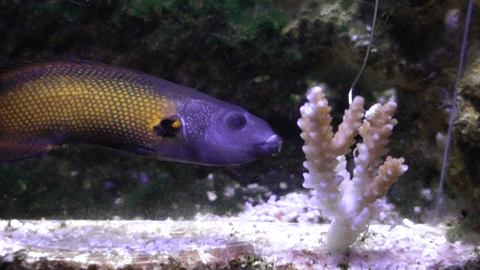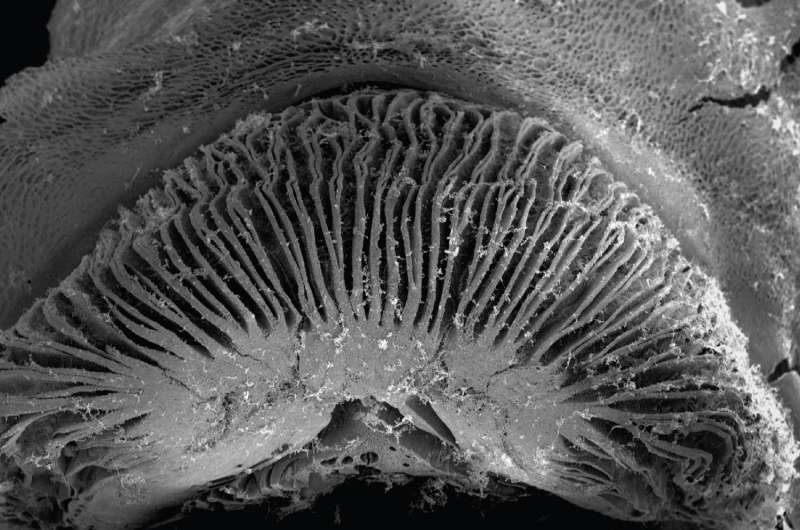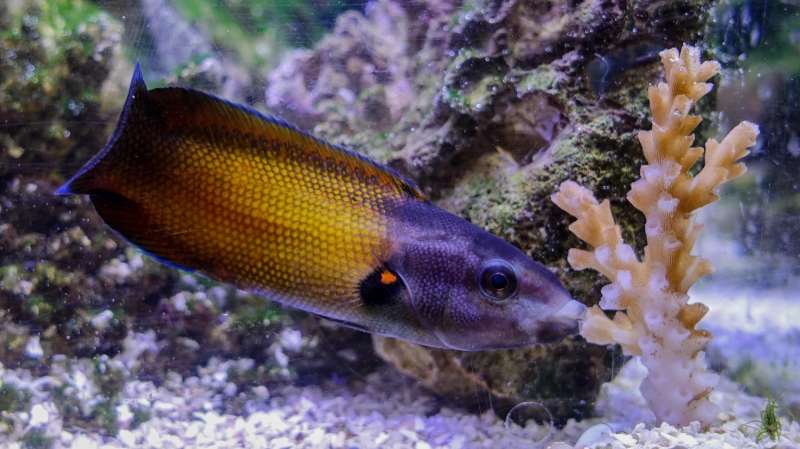With specialized lips, these fish dine on razor-sharp, stinging corals

Of all the things an animal could eat, corals are arguably one of the toughest, thanks to their thin, mucus-covered flesh packed with venomous stinging cells spread over a razor-sharp skeleton. Perhaps that explains why of the more than 6,000 fish species that live on the reef, only 128 are known to feed on corals. Now, researchers reporting in Current Biology on June 5 have discovered how at least one species of coral-feeding fish does it. They "kiss" the flesh and mucus off the coral skeleton using protective, self-lubricating lips.
"The lips are like the gills of a mushroom but covered in slime," says David Bellwood of James Cook University in Australia. "It is like having a running nose but having running lips instead."
The researchers suggest that the mucus may facilitate suction while offering protection from corals' stinging nematocysts.
Bellwood and the study's first author, Víctor Huertas, recognized that the problem when eating corals would come as lips touched the surface. They wanted to find out exactly what was happening in that process. They used a scanning electron microscope to get extremely high-quality images that could capture the specialized lips of tubelip wrasses (Labropsis australis) in unprecedented detail.
Those images revealed remarkable differences between the lips of the tubelip wrasse and another wrasse species that doesn't feed on corals. Wrasses that don't eat corals have lips that are thin and smooth, with teeth that protrude slightly. By comparison, tubelip wrasses have lips that are fleshy and stick out, forming a tube when the mouth is closed that covers all the teeth.

The most prominent characteristic of the tubelip wrasse's lips, they found, are numerous thin membranes arranged outward from the center like the gills of a mushroom. The mouth surface of tubelip wrasses also includes many folds loaded with highly productive mucus-secreting glands. In other words, their lips drip with slime.
High-speed video images of feeding tubelip wrasses showed that they briefly place their lips in contact with the coral prior to delivering a powerful suck. Rather than grabbing onto coral, they appear to seal the mouth over a small area, presumably to increase suction-feeding efficiency, the researchers report. The new evidence suggests the tubelip wrasses and their mucus-laden lips survive by feeding primarily on coral mucus. The findings open up a whole new way of looking at the nature of feeding in fishes, the researchers say.
"One always assumes that fishes feed using their teeth, but, like us, the lips can be an essential tool," Bellwood says. "Imagine feeding without lips or cheeks; the same applies to fishes."
On their quest to learn how the wrasses cope with the challenge of reef feeding, the researchers say the next step is to discover the "magic of the mucus."

More information: Current Biology, Huertas and Bellwood: "Mucus-secreting lips offer protection to suction-feeding corallivorous fishes" www.cell.com/current-biology/f … 0960-9822(17)30501-8 , DOI: 10.1016/j.cub.2017.04.056
Journal information: Current Biology
Provided by Cell Press



















